Do you have a question about the Toyota HIGHLANDER HYBRID 2007 and is the answer not in the manual?
Explains types of warnings, their appearance, and how they are used in the manual.
Explains the meaning of the universal safety symbol used in the manual.
Describes the characteristics of the hybrid system and its operation.
Highlights the importance and function of seat belts and airbags for safety.
Provides an overview of the hybrid vehicle's systems and operation.
Explains how the Toyota hybrid system combines engine and motor power.
Describes the function and display of the energy monitor.
Provides instructions on how to start the hybrid vehicle.
Offers tips for driving the hybrid vehicle efficiently.
Details safety precautions for operating the hybrid vehicle.
Provides critical safety guidance for accident situations.
Details the layout and components of the instrument panel.
Explains the functions and layout of the instrument cluster.
Lists and explains various indicator symbols on the instrument panel.
Covers the operation and security features of vehicle keys and doors.
Details key usage, immobilizer system, and key number plate.
Explains the function and operation of the wireless remote control.
Details operation of side doors, back door, power windows, and child protectors.
Provides instructions on operating the power windows.
Explains how to operate the driver's window using the key.
Details the function and operation of occupant restraint systems.
Provides information on seat adjustment and precautions.
Explains seat belt usage, precautions, and fastening procedures.
Details the SRS airbag system and its operation.
Explains the function of side and curtain shield airbags.
Covers operation of vehicle lights, wipers, and defogger systems.
Explains the operation of headlights and turn signal indicators.
Details how to operate and use the emergency hazard lights.
Provides instructions for operating the windshield wipers and washer.
Explains the operation of rear window and mirror defogging systems.
Describes vehicle gauges, meters, and service reminder indicators.
Explains the fuel gauge and low fuel warning light.
Details indicators and buzzers for vehicle service reminders.
Explains the features and display modes of the multi-information system.
Covers the operation of the ignition, transmission, and parking brake.
Details the different positions and operation of the ignition switch.
Explains the selector lever positions and shift lock system.
Provides instructions on operating and setting the cruise control.
Provides an overview and basic features of the vehicle's audio system.
Details on turning the system on/off and switching between functions.
Explains the function of audio controls on the steering wheel.
Describes the components and operation of the rear seat entertainment system.
Covers the operation of the air conditioning system.
Details the controls for the manual air conditioning system.
Explains the controls for the automatic air conditioning system.
Describes how to select different air flow modes for optimal comfort.
Offers practical advice for using the air conditioning system effectively.
Details the trip information display for Type A systems.
Details the trip information display for Type B systems.
Explains how to set the clock and operate the compass.
General guidance and precautions for operating the vehicle.
Safety precautions specific to utility vehicles.
Guidance on vehicle break-in and recommended fuel specifications.
Information on emission control devices in the exhaust system.
Safety precautions related to engine exhaust gases.
Explains normal engine oil consumption and related factors.
Details on the type and use of iridium-tipped spark plugs.
Explains the function of the brake actuator and warning lights.
Describes indicators for brake pad wear and replacement.
Information on the electric power steering system and its operation.
Details on vehicle identification number (VIN) and labels.
Explains the purpose and function of theft prevention labels.
Cautionary notes regarding suspension and chassis modifications.
Illustrates and explains various symbols found on tires.
Explains the DOT symbol and Tire Identification Number (TIN).
Details how to read and understand tire size information.
Explains the government grading system for tires (Treadwear, Traction, Temp).
Information on total load capacity limits for the vehicle.
Details the seating capacity of the vehicle.
Specifies the towing capacity limits for the vehicle.
Provides precautions for safely stowing cargo and luggage.
Explains how to determine cargo capacity and weight distribution.
Covers the procedures for starting and driving the vehicle.
Checks and preparations required before starting the hybrid system.
Step-by-step instructions for starting the hybrid system.
Provides driving tips for different weather and road conditions.
Safety precautions for driving off-road.
Offers specific advice for driving in winter conditions.
Information and precautions for dinghy towing the vehicle.
Guidance and safety information for towing a trailer.
Tips for improving fuel economy and vehicle longevity.
Covers procedures for various emergency situations.
Troubleshooting steps for a vehicle that will not start.
Guidance on what to do if the hybrid system stalls during operation.
Steps to follow if the vehicle's engine or hybrid system overheats.
Instructions for changing a flat tire and related safety measures.
Provides guidance on how to properly tow the vehicle.
Troubleshooting steps for shifting the transmission selector lever.
Advice on what to do if your vehicle keys are lost.
Guidance for losing the wireless remote control transmitter.
Covers methods for preventing corrosion and maintaining appearance.
Provides guidelines and tips for preventing vehicle corrosion.
Instructions and precautions for washing and waxing the vehicle.
Details on how to clean the vehicle's interior surfaces.
Overview of do-it-yourself maintenance procedures.
Identifies key components within the engine compartment.
Shows the locations of various fuse boxes in the vehicle.
Provides essential safety precautions for DIY maintenance.
Illustrates the correct procedure for positioning the vehicle jack.
Lists necessary parts and tools for do-it-yourself maintenance.
Covers maintenance checks for the engine and chassis components.
Provides instructions on how to check and maintain engine oil level.
Details how to check and maintain the coolant level.
Explains the procedure for checking the brake fluid level.
Provides instructions for checking and maintaining tire pressure.
Guidance on checking tire tread wear and replacement procedures.
Explains the procedure and importance of tire rotation.
Provides instructions for installing snow tires and chains.
Details the process and precautions for replacing vehicle wheels.
Offers specific precautions for handling aluminum wheels.
Information on checking and maintaining electrical components.
Guidance on checking the condition of the 12-volt battery.
Safety precautions for recharging the 12-volt battery.
Instructions for checking and replacing vehicle fuses.
Details on how to add washer fluid to the vehicle.
Provides instructions for replacing various vehicle light bulbs.
Instructions for accessing and replacing headlight bulbs.
Covers replacement of front fog, turn signal, and marker lights.
Instructions for replacing the high-mounted stoplight bulb.
Details on how to access and replace license plate lights.
Provides key specifications for the vehicle.
Lists the vehicle's dimensions and weight specifications.
Details engine type, displacement, bore, stroke, and torque.
Provides specifications for the traction motor.
Lists specifications for the hybrid battery system.
Contains essential service specifications for various vehicle components.
Information on tire size, pressure, and specifications.
Details the locations and types of vehicle fuses.
Provides information on reporting safety defects to NHTSA and Toyota.
| Brand | Toyota |
|---|---|
| Model | HIGHLANDER HYBRID 2007 |
| Category | Automobile |
| Language | English |
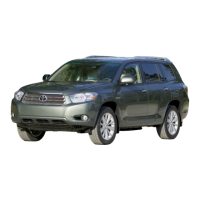
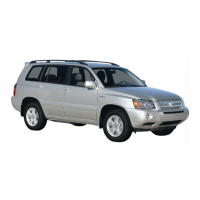


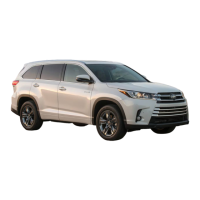




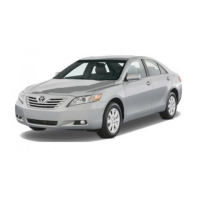
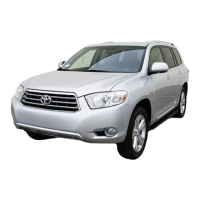

